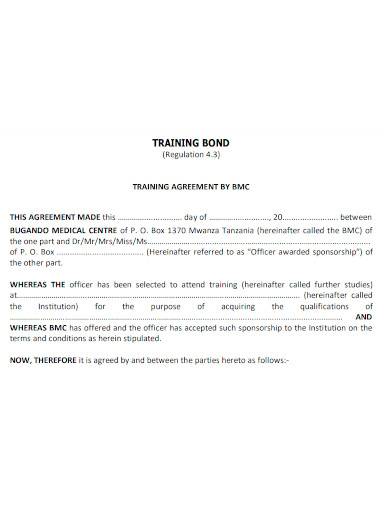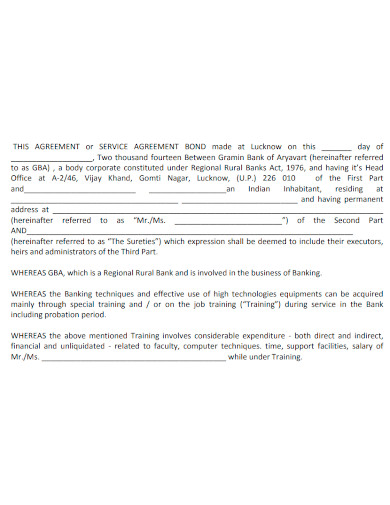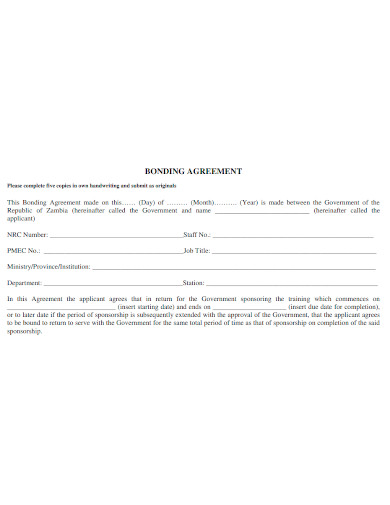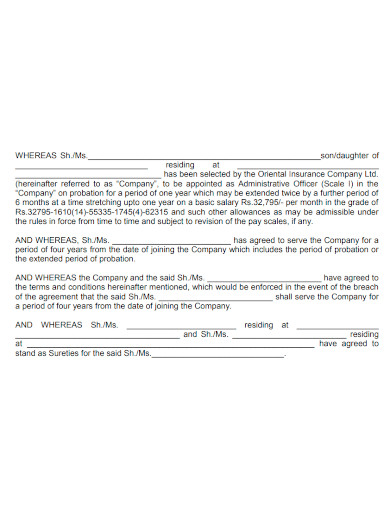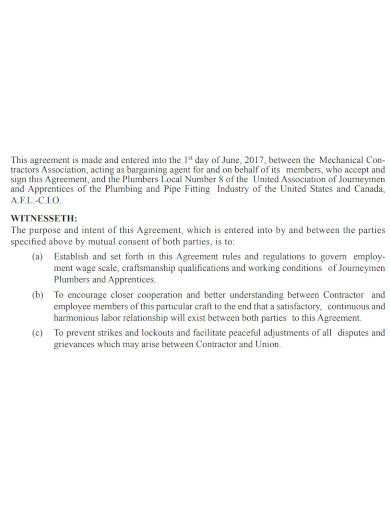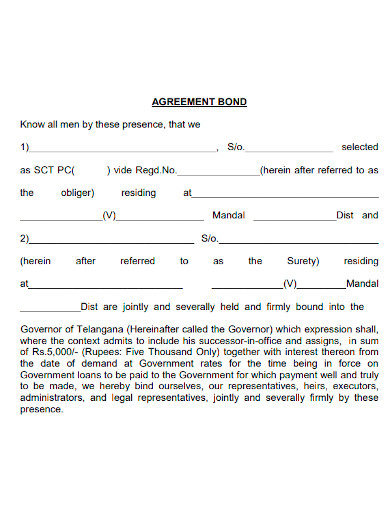One of the main reasons why new employers use training bond agreements is to prevent employees from leaving the company immediately after completing their training needs. This is particularly important in industries and markets where the project cost of training is high, as it allows employers to recoup the costs of training over a longer period of time. Additionally, training bond agreements can help employers to retain valuable employees and ensure that they have a stable workforce analysis. The terms of a training bond agreement can vary depending on the employer and the industry. Typically, the length of the bond will be specified, as well as the specific duties that the employee will be expected to perform. Additionally, the agreement may include penalties that will be imposed if the employee breaches the agreement, such as fines or a requirement to repay the cost of training.
5+ Training Bond Agreement Samples
1. Training Bond Agreement Sample
2. Training Bond Agreement Format
3. Printable Training Bond Agreement
4. Editable Training Bond Agreement
5. Standard Training Bond Agreement
6. Professional Training Bond Agreement
What Is Training Bond Agreement?
A training bond agreement is a legally binding contract between an employer and a new employee, in which the employee agrees to work for the employer for a certain period of time after completing a training program or apprenticeship. The purpose of a training bond agreement is to ensure that the employer recoups the costs of training the employee and to prevent the employee from leaving the company immediately after completing the training. The terms of a training bond agreement may include the length of the bond, the specific duties the employee will be expected to perform, and any penalties that will be imposed for contract breaches of the agreement.
How to Make a Training Bond Agreement
While training bond agreements can be beneficial for both employers and employees, it is important that they are fair and reasonable. Employers should ensure that the terms of the contracting agreement are clear and that employees are fully aware of their obligations. Additionally, employers should not use training bond agreements as a way to exploit employees or force them to work in conditions that are not safe or fair. To make a training bond agreement, you will need to follow these steps:
Step 1: Define the Terms and Information
Clearly define the terms of the agreement including the length of the bond, the specific duties that the employee will be expected to perform, and any penalties that will be imposed if the employee breaches the agreement. Include the names and contact information of all parties involved: This should include the employer, the employee, and any other relevant parties, such as a training program provider.
Step 2: Determine the Date and Responsibilities
Specify the start and end date of the agreement: This should include the date on which the employee begins the training program and the date on which the bond period begins. Clearly outline the responsibilities of both parties: This should include the employer’s obligation to provide training and the employee’s obligation to work for the employer for a specified period of time after completing the training.
Step 3: Include Laws
Include any applicable laws or regulations: If there are any laws or regulations that apply to the training bond agreement, they should be included in the contract. Make sure the agreement is legally binding: The agreement should be reviewed by a lawyer or other legal professional to ensure that it is legally binding and enforceable.
Step 4: Get it Signed
Get the agreement signed by all parties involved: Once the agreement has been reviewed and approved, it should be signed by all parties involved. Keep a copy of the agreement: Employers and employees should each retain a copy of the agreement for their records.
FAQs
Why do employers use training bond agreements?
Employers use training bond agreements to recoup the cost of training employees and to retain valuable employees. Training can be costly and these agreements help employers to recover these costs by ensuring that employees stay with the company for a certain period of time after completing the training.
What are the terms of a training bond agreement?
The terms of a training bond agreement can vary depending on the employer and the industry. Typically, the length of the bond will be specified, as well as the specific duties that the employee will be expected to perform. Additionally, the agreement may include penalties that will be imposed if the employee breaches the agreement, such as fines or a requirement to repay the cost of training.
Is a training bond agreement legally binding?
Yes, a training bond agreement is legally binding. It is a legally enforceable contract between an employer and an employee. It is recommended to consult with a legal professional to ensure that the agreement is in compliance with all applicable laws and regulations.
In conclusion, training bond agreements are a type of employment contract that can be beneficial for both employers and employees. They help employers to recoup the costs of training and ensure that they have a stable workforce, while also providing employees with valuable training outlines and work experience. However, it is important that training bond agreements are fair and reasonable, and that the rights and obligations of both parties are clearly defined.
Related Posts
FREE 26+ Investment Agreement Samples in PDF | MS Word | Google Docs | Pages
Agreement Between Two Parties For Money Samples & Templates
Land Purchase Agreement Samples & Templates
Sample Business Agreement between Two Parties
FREE 10+ Trial Agreement Samples In MS Word | Google Docs | Apple Pages | PDF
FREE 9+ Shop Rental Agreement Samples [ Commercial, Lease, Tenancy ]
FREE 10+ Charter Agreement Samples In MS Word | Google Docs | Apple Pages | PDF
FREE 10+ Mentoring Agreement Samples In MS Word | Apple Pages | PDF
FREE 10+ Partner Agreement Samples In MS Word | Google Docs | Apple Pages | PDF
FREE 10+ Individual Agreement Samples In MS Word | Google Docs | Apple Pages | PDF
FREE 10+ Strategic Agreement Samples In MS Word | Google Docs | Apple Pages | PDF
FREE 10+ Equity Agreement Samples In MS Word | Google Docs | Apple Pages | PDF
FREE 10+ Producer Agreement Samples in MS Word | Apple Pages | PDF
FREE 10+ Grant Agreement Samples In MS Word | Apple Pages | PDF
FREE 8+ Meeting Agreement Samples in MS Word | Google Docs | Apple Pages | PDF

